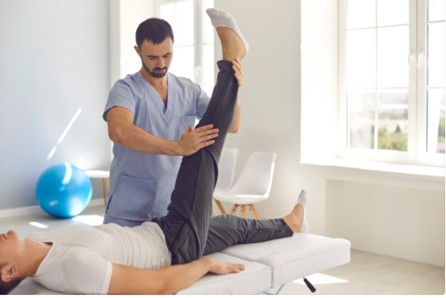Top Tips on Returning to Sports or Exercise After Recovering from COVID-19
When can you exercise after COVID-19? How long before exercising after COVID-19?
Whether you are a professional athlete or fitness enthusiast, you might have asked this question – when can I exercise after COVID-19? With nearly two-thirds of COVID-19 survivors from the Survivor Corp Facebook group reporting lingering fatigue, the chances are that your doctor told you to wait and proceed with caution.
Moreover, current research reveals that resuming routine physical activity can cause medical complications. Common risk factors include lung damage, blood clots, chronic pain, and heart diseases (i.e., myocarditis and arrhythmia). Without proper care, these problems can turn into life-long worry.
Therefore, you must take things slowly before you return to your prior level of activity.
Here are a few things to consider before starting:
The Timeline: When Can You Exercise After COVID-19?
Returning to exercise sports/exercise after recovering from COVID-19 requires patience and practicality. Physical therapists and doctors recommend tentative timelines based on your condition. The final verdict depends on your current symptoms and other variables (like age, physique, and stamina).
Here are some rules to follow:
- Avoid physical activity and workout sessions if you are sick and recovering from the novel virus.
- Rest for at least 10-14 days before you begin exercising again.
- Wait for a minimum of four weeks (or more) before you start your regular training/exercising sessions.
During this waiting stage, focus on recovering and regaining lost strength. The best practices include hydration, well-balanced meals, nutritious diet plans, and lots of rest.
The Best Practices for Returning to Exercise after COVID-19
Now that we know how long you should wait before exercising after COVID-19, let’s talk about the how-to. Understand that transitioning to routine activity can be frustrating and tedious. Depending on how mild or severe your illness was, completing basic tasks (like walking and jogging) will require extra effort.
You can experience shortness of breath, heart palpitation, and muscle pain when you begin. These symptoms can escalate if you are not careful.

Therefore, you must practice the 3 P’s whenever your work out/exercise.
They are as follows:
Practice patience and perseverance.
Return to physical activity gradually, beginning with slow walks before you move onto brisk walks for 10-15 minutes. Increase speed and duration before you start something more challenging (like CrossFit or HIIT training).
Pace Yourself
Look for red flags like shortness of breath, fatigue, and pain when you start exercising. Monitor your symptoms and put a halt to your exercise plans. Resume activity when symptoms subside or if your healthcare provider permits you to continue.
Physical Therapy
Visit a physical therapist if you want to seek professional advice on preventing relapse and tackling health complications. They can guide you through the process, often facilitating natural recovery through personalized therapy and recommended functional training.
Final Words
In the end, health complications might arise if you ignore the signs of fatigue and muscle pain. Accept that your body has changed and proceeded accordingly. The right tactics and proper physical therapy can support natural recovery.
Eventually, assisting you in returning to sports/exercise after recovering from COVID-19 with minimum complications.
Ready to start? Call us @ 201-773-8851 or contact Specialized Physical Therapy to schedule a diagnosis and effective treatment plan.

